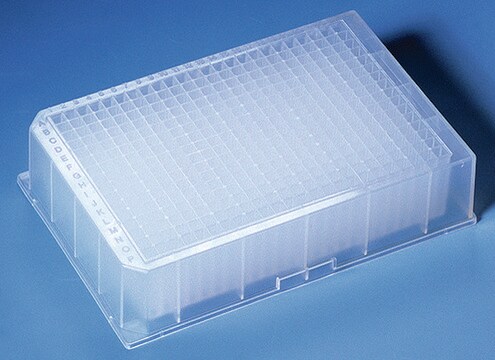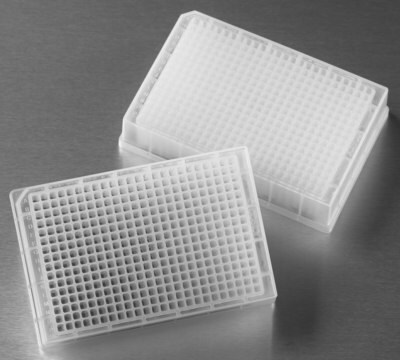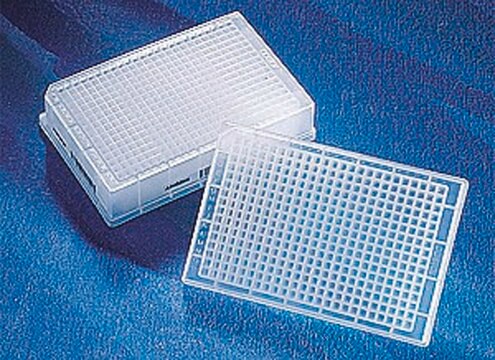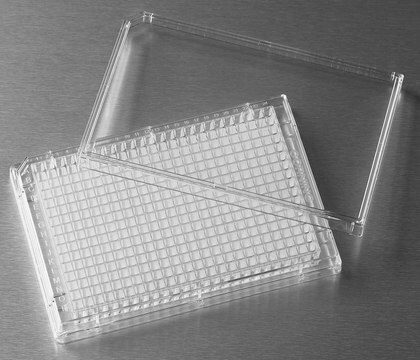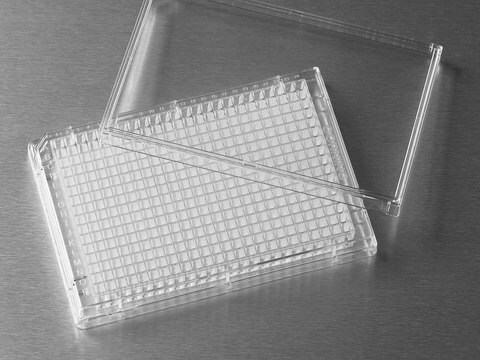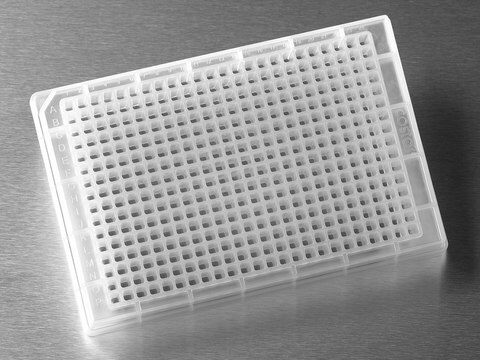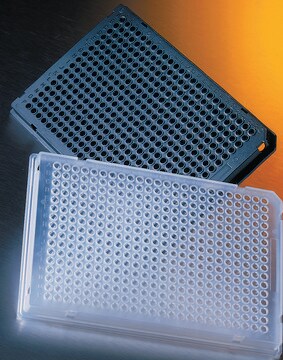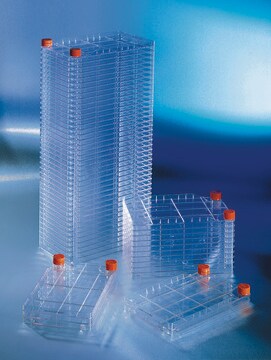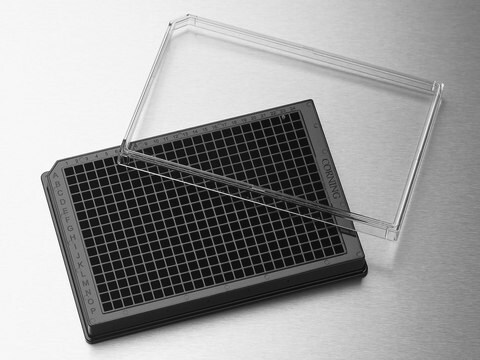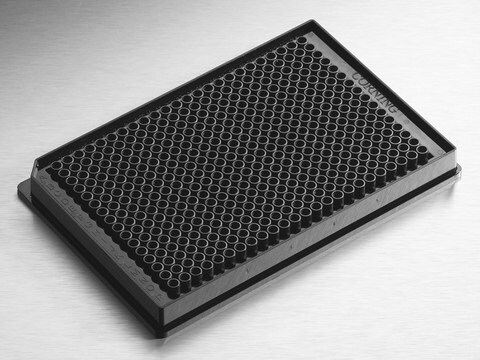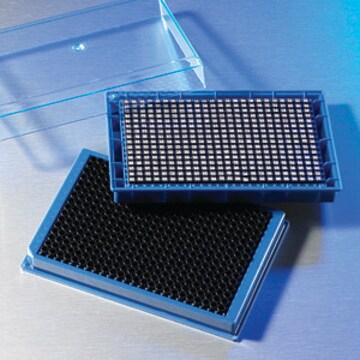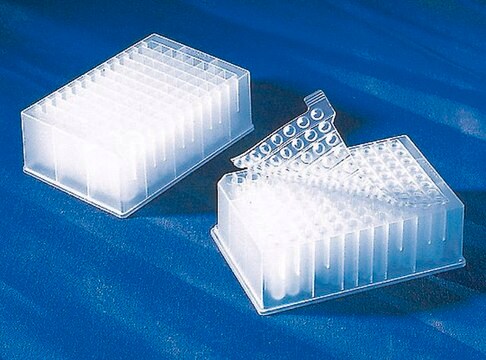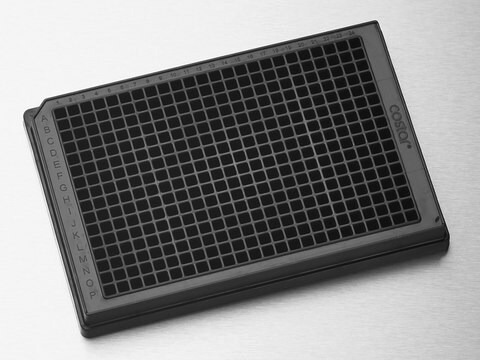CLS3342
Corning® 384 Well Deep Well Plate
clear polypropylene, V-bottom, sterile, deep well, lid: no, pack of 5
Synonym(s):
384 deep well storage block, 384 well assay block, 384 well storage block
About This Item
clear bottom
clear polypropylene
polypropylene (plates, blocks and sealing mats)
square translucent wells
Recommended Products
material
V-bottom
clear bottom
clear polypropylene
polypropylene (plates, blocks and sealing mats)
square translucent wells
sterility
sterile
feature
lid: no
lid: no
skirt
deep well
packaging
pack of 5
case of 50
manufacturer/tradename
Corning 3342
size
384 wells
well volume
240 μL
color
clear
suitability
suitable for (general storage, liquid handling; automated applications)
binding type
non-treated surface
Looking for similar products? Visit Product Comparison Guide
General description
- Ideal for high throughput applications requiring added volume
- Improved sample recovery through the specially designed wells that feature a square geometry that tapers to a V-bottom point
- Solvent resistant polypropylene provides compatibility with many common organic solvents (e.g. DMSO, ethanol, methanol)
- Certified DNase- and RNase-free
Legal Information
related product
Choose from one of the most recent versions:
Certificates of Analysis (COA)
Sorry, we don't have COAs for this product available online at this time.
If you need assistance, please contact Customer Support.
Already Own This Product?
Find documentation for the products that you have recently purchased in the Document Library.
Customers Also Viewed
Our team of scientists has experience in all areas of research including Life Science, Material Science, Chemical Synthesis, Chromatography, Analytical and many others.
Contact Technical Service